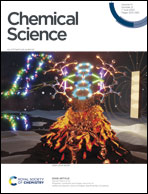A nickel-based metal–organic framework as a new cathode for chloride ion batteries with superior cycling stability†
Abstract
Chloride ion batteries (CIBs) have drawn growing attention as attractive candidates for large-scale energy storage technology because of their high theoretical energy densities (2500 W h L−1), dendrite-free characteristics and abundance of chloride-containing materials available worldwide. However, the further development of CIBs is greatly limited by sluggish Cl− diffusion and distinct structural variation of cathode materials, resulting in severe decayed capacity and inferior rate performance. Metal–organic framework (MOF) materials possess regular pores/channels and flexible structural designability to accommodate charge carrier ions, but the application of MOFs in anion-type batteries has not been reported. Here, we demonstrate the first example of Ni(dpip) with two different opening sizes of tubular channels serving as the cathode for high performance CIBs. The Ni-based MOF exhibited a stable reversible capacity of 155 mA h g−1 with an admirable low capacity decay of 0.026% per cycle over 500 cycles and superior kinetics with a 10−10 cm2 s−1 average diffusion coefficient for chloride ions as well. The high performance of the Ni(dpip) cathode results from the synergetic redox couples of Ni metal nodes and N-ligands, the unique double-channel structure for reversible Cl-storage, and the low chloride diffusion energy barrier. This work switches on the new application of MOF-based materials as cathodes for CIBs.

- This article is part of the themed collections: Most popular 2023 energy & environmental chemistry articles and 2023 Chemical Science HOT Article Collection


 Please wait while we load your content...
Please wait while we load your content...